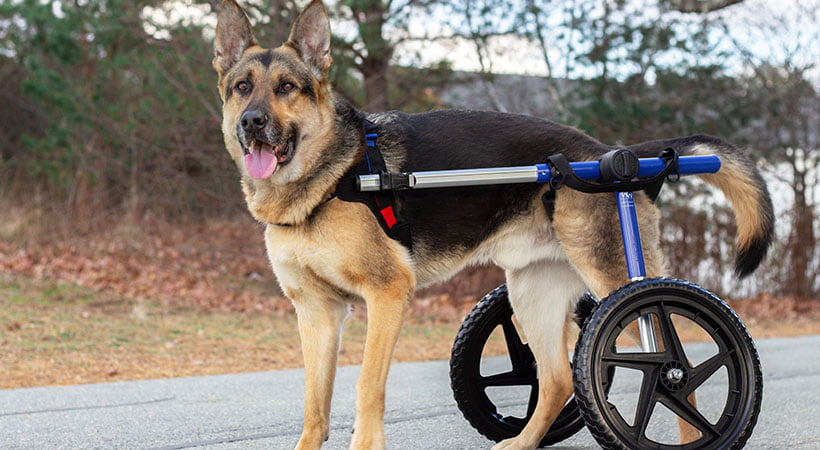Table of Contents
Improving pet mobility is essential for enhancing their quality of life, especially as they age. The best how to improve pet mobility strategies involve regular exercise, a balanced diet, and appropriate medical care. In this guide, we provide seven effective tips to help you boost your pet’s movement and overall well-being.

Top Tips for Improving Pet Mobility
1. Provide Regular Exercise
Regular exercise is crucial for maintaining and improving your pet’s mobility. Activities such as walking, swimming, and playing fetch can help keep your pet’s joints flexible and muscles strong. Tailor the exercise routine to your pet’s age, breed, and health condition. For more on pet exercise, visit AKC Exercise Ideas.
2. Maintain a Healthy Weight
Excess weight can put additional strain on your pet’s joints, leading to mobility issues. Ensure your pet maintains a healthy weight through a balanced diet and regular exercise. Consult your veterinarian for dietary recommendations and weight management strategies. For tips on maintaining a healthy weight, see PetMD Healthy Weight Tips.
3. Use Joint Supplements
Joint supplements, such as glucosamine and chondroitin, can support joint health and improve mobility in pets. These supplements help reduce inflammation and promote cartilage repair. Consult your veterinarian before starting any supplement regimen. For more on joint supplements, visit AKC Joint Supplements.
4. Provide a Comfortable Environment
A comfortable living environment can significantly impact your pet’s mobility. Ensure your pet has a soft, supportive bed and avoid slippery floors by using rugs or mats. Provide ramps or steps to help them access higher areas without jumping. For more on creating a pet-friendly environment, see The Spruce Pets Home Improvements.
5. Incorporate Physical Therapy
Physical therapy can be highly beneficial for improving your pet’s mobility. Techniques such as hydrotherapy, massage, and range-of-motion exercises can enhance flexibility and reduce pain. Consult a professional pet physical therapist for a tailored program. For more on physical therapy, visit VCA Animal Hospitals Canine Rehabilitation.
6. Monitor and Manage Pain
Effective pain management is crucial for maintaining your pet’s mobility. Work with your veterinarian to identify signs of pain and develop a comprehensive pain management plan, which may include medications, supplements, and lifestyle changes. For tips on managing pet pain, see PetMD Pain Management.
7. Schedule Regular Veterinary Check-Ups
Regular veterinary check-ups are essential for monitoring your pet’s health and mobility. Your veterinarian can detect early signs of mobility issues and recommend appropriate treatments. Routine check-ups ensure your pet stays healthy and active. For more on the importance of veterinary visits, see ASPCA Veterinary Care.
Conclusion on How to Improve Pet Mobility
Improving your pet’s mobility involves a combination of regular exercise, proper nutrition, and medical care. By following these essential tips on how to improve pet mobility, you can enhance your pet’s quality of life and ensure they remain active and happy. Remember to consult your veterinarian for personalized advice and treatment options. For more tips on pet care, check out our Pet Care Guide.
FAQs on How to Improve Pet Mobility
How often should I exercise my pet to improve mobility?
Aim to exercise your pet daily, with the duration and intensity tailored to their age, breed, and health condition. Regular, moderate exercise is key to maintaining mobility.
What are the best types of exercise for pets with mobility issues?
Low-impact activities such as walking, swimming, and gentle play are ideal for pets with mobility issues. These exercises help keep joints flexible without causing strain.
Can diet impact my pet’s mobility?
Yes, a balanced diet can support joint health and prevent obesity, which can strain joints. Ensure your pet’s diet includes essential nutrients and consult your veterinarian for recommendations.
What signs indicate my pet might have mobility issues?
Common signs include limping, difficulty standing up or lying down, reluctance to jump or climb stairs, and reduced activity levels. If you notice these signs, consult your veterinarian.
Are joint supplements safe for pets?
Joint supplements like glucosamine and chondroitin are generally safe for pets, but it’s essential to consult your veterinarian before starting any new supplement regimen.
How can I make my home more accessible for a pet with mobility issues?
Use non-slip rugs, provide supportive bedding, install ramps or steps, and keep your pet’s essentials within easy reach to make your home more accessible for a pet with mobility issues.











